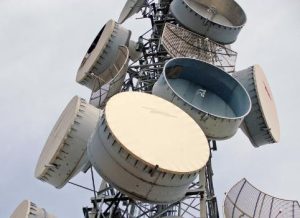What Are the Primary 5G Spectrum Bands?
Introduction to 5G Spectrum Bands

The deployment of 5G technology marks a significant leap in telecommunications capabilities, with a diverse array of spectrum bands designated to facilitate various aspects of the network's performance and reach. These bands are broadly categorized into two groups: Frequency Range 1 (FR1) and Frequency Range 2 (FR2), each serving distinct purposes and covering different parts of the spectrum.
Key FR1 Bands: Lower Frequencies for Broader Coverage
FR1, covering frequencies from 410 MHz up to 7.125 GHz, includes several key bands that are pivotal for widespread 5G deployment due to their balance of coverage and capacity:
- n1 (2100 MHz): Primarily used in urban and suburban areas, this band supports broad service deployment and is integral to many existing 4G networks transitioning to 5G.
- n3 (1800 MHz): Known for its extensive adoption worldwide, n3 offers an excellent mix of coverage and capacity, making it ideal for both urban and rural areas.
- n28 (700 MHz): This band provides extensive coverage, particularly suitable for rural regions and indoor penetration, facilitating a wide-reaching network.
- n78 (3500 MHz): Often considered the 'mid-band', n78 is crucial for urban areas, providing higher capacities needed for dense populations and high data demand environments.
Exploring FR2: High Frequencies for High Capacity
FR2 includes the higher frequency millimeter wave (mmWave) bands ranging from 24.25 GHz to 52.6 GHz. These bands are essential for delivering ultra-high-speed connectivity in concentrated areas:
- n257 (26.5-29.5 GHz): Offers significant bandwidth for high throughput applications, commonly deployed in dense urban centers.
- n258 (24.25-27.5 GHz): Early adopter of the mmWave technology for 5G, supporting rapid data transfer rates.
- n260 (37-40 GHz): Tailored for environments requiring massive data capacity, such as stadiums and arenas.
- n261 (27.5-28.35 GHz): Similar in application to n257 and n258, but with specific adaptations for unique regional deployments.
The Strategic Role of These Bands
The primary 5G spectrum bands are not just allocations of frequency; they are the backbone of modern telecommunications. FR1 bands are instrumental in ensuring that 5G services are accessible over broad areas, including remote locations. Conversely, FR2 bands are deployed to meet the soaring data demands in urban settings, where high-speed connectivity is essential for supporting advanced applications such as autonomous vehicles, smart city infrastructure, and immersive technology experiences.
Conclusion: The Diverse Landscape of 5G Bands
Each of these bands plays a critical role in shaping the capabilities and evolution of 5G networks. Their strategic use enables tailored solutions that meet diverse geographical and technical needs. As 5G continues to evolve, these bands will facilitate not just faster and more reliable communications but will also usher in a new era of technological innovations driven by high-speed, robust connectivity.